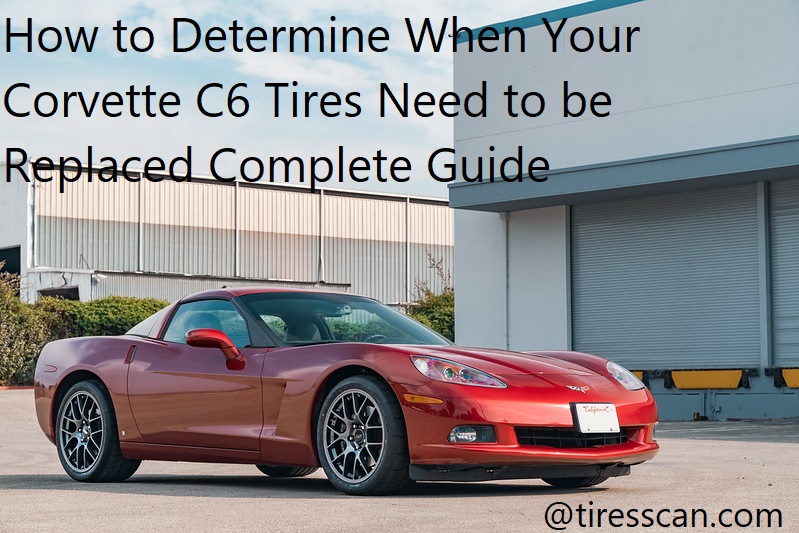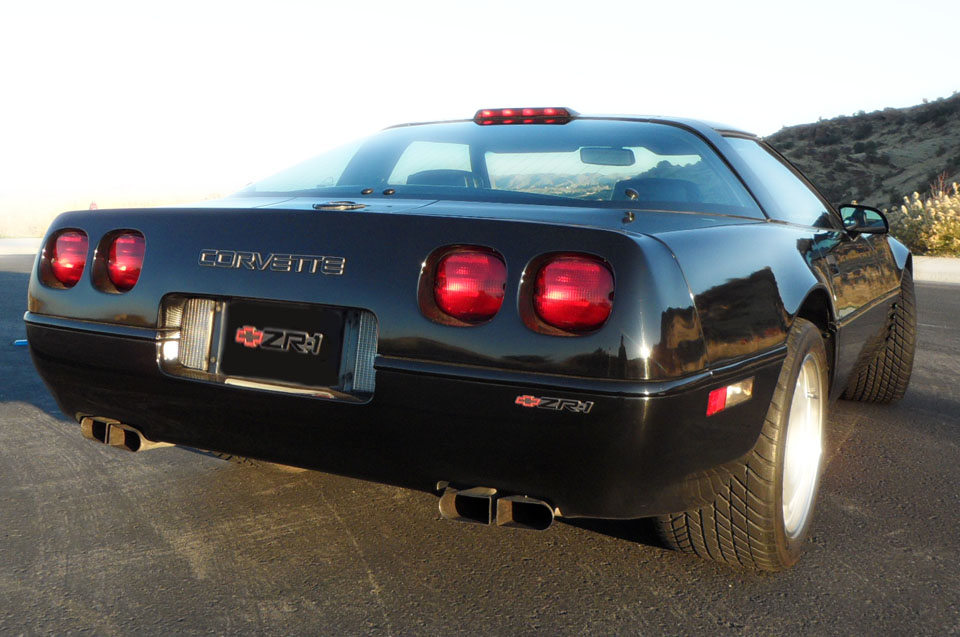Tired of your Corvette C6 tires not performing as well as they used to? You’re not alone. Many people have the same problem, but don’t know when to replace them.
This article is here to help! Learn the importance of properly maintaining tires, and get all the information you need to determine when your C6 tires need replacing.
It’s the job of your Corvette C6 tires to keep your vehicle firmly planted on the road and safely guide you wherever you go. It’s important to choose tires that are tailored to your specific make, model, and driving conditions as they wear out. But no matter how perfect the tire fitment is, all tires will eventually need to be retired. Thus, learning how to determine when your Corvette C6 tires need to be replaced is a great skill for any car owner.
In this guide, we’ll outline what you need to know about when it’s time for new tires – which includes understanding warranties, inspecting tread wear bars and depth metrics, keeping up with regular maintenance schedules, among others.
It’s important to remember that taking care of your Corvette C6 tires goes beyond simply looking at them every once in a while – proper maintenance can play a major role in tire longevity as well as improving overall performance of your vehicle. We’re here to help you make sure that you stay safe on the roads by providing tips on how you can extend tire life span without spending too much money doing so! So let’s jump right into it!
Explanation of the importance of replacing tires on a Corvette C6
Ensuring that your tires have the right amount of air pressure and are regularly rotated, balanced and aligned is an important requirement to keeping your Corvette C6 operating smoothly and efficiently. Persistent failure to properly care for your tires can result in a significantly shorter lifespan and poorer performance, but knowing when it’s time to replace your tires can be very difficult.
Having the correct tire size and type for your Corvette C6 provided [or mandated/specified] by Chevrolet is important for optimal handling and motoring safety. Choosing a tire that excels in traction, stopping distance and overall performance can make all of the difference in how your car drives in all weather conditions so understanding tire specifications is key.
When searching for replacement tires it’s important to keep a few factors in mind – tire size, tread design and type (all-season/all-terrain/summer etc.), speed rating (including peak performance in wet or dry conditions) Additionally, load ratings indicate the maximum weight each tire is able to carry safely. Utilizing the correct load rating is critical for avoiding tire damage. This can help you decide between two different tire models with similar reviews regarding traction or wet-weather performance; use the higher rated option if there’s any doubt about which one might be best for you car!
It’s also important to pay close attention to age when gauging whether or not it’s necessary to replace a particular set of tires; as rubber compounds degrade over time as part of their natural aging process they become less dense which can dramatically reduce performance on wet road surfaces, including braking efficiency leading to dangerous situations while driving. Always consult with a qualified mechanic before replacing any component of the Corvette C6 chassis components such as tires.

Inspecting Tread Depth
To determine when your Corvette C6 tires need to be replaced, you’ll need to inspect the tread depth. To do this, use a tread depth gauge—or a penny. A tread depth gauge should measure in 32nds of an inch, whereas a penny should measure out in 64th of an inch (this is usually printed on the side of the coin).
Start by pressing the tread depth gauge or penny into several locations across your tire. If you’re using a penny, make sure Abraham Lincoln’s head is facing down and into the tire tread grooves. You’re looking for a minimum of 2/32nds of an inch of remaining tread. If your reading comes in below this threshold on any part of the tire, it’s time to replace your tires.
Another method for determining when your Corvette C6 tires need to be replaced is by examining the tread life warranty code often found molded into their side walls . These codes are typically four digits long and represent both manufacturer and age related information about our specific tires. Use these codes as reference points when determining how much tread life our specific tires have left and if they need replacing or not In general, if our tires are more than six years old at least 2/10ths (or 1/32″)of remaining inch of applicable wear indicators than they’re too old and should be replaced as soon as possible.
Explanation of how to measure tread depth
Tread depth is a helpful indicator for determining when your Corvette C6’s tires need to be replaced. Tread depth can be measured using a device called a tread depth gauge. Make sure that the gauge is clean and free of debris before measuring your tires.
Here are some steps you should take when measuring tire tread depth:
- Insert the gauge into the interior grooves of the tire and press down on it firmly. The lower end should just slide in with no pressure applied, while the higher end requires more pressure before it slides in smoothly.
- Note down the main readings and check them against your manufacturer’s recommended readings for proper wear and tear of tires on your vehicle.
- Turn over and reinsert in other grooves, making sure not to rotate or twist along the way for accurate results
- Once done, measure other tires similarly to compare tread depths across all four tires; this process gives you an overall idea about how worn out all four are collectively at any time so they can be replaced together.
How to determine if tread depth is within the safe range
One of the best ways to determine when your Corvette C6 tires need to be replaced is though a tire tread depth inspection. As part of regular maintenance, it’s important to check the tread depth of all four tires on your vehicle. This can help you identify signs of wear and tear that could indicate it’s time for a tire replacement.
The U.S Department of Transportation (DOT) has set a federal safety standard that states that tires must have at least 2/32nds of an inch remaining tread before being considered safe for use. However, if the tires have less than 4/32nds left, this may mean they aren’t able to provide you with enough traction or grip in wet conditions and are not safe for use.
To check the tread depth on your Corvette C6 tires, take a penny and insert it head-down between two lugs on one tire, then measure how much penny is visible above the rubber – you want to see Abraham Lincoln’s whole head above the surface! If any part of his body disappears below the surface, then this means that more than 2/32nds (1.6mm) has been worn away. If the head is entirely submerged below the surface then this may indicate unsafe levels and you should consider replacing them soon.
It’s also important not to forget about other indicators such as visibly cracked or bulging sidewalls which may be longer lasting structural damage or signs of air pressure loss within each tire – these are also signs that a replacement should be considered quickly for safety reasons.
Signs of wear that indicate the need for new tires
The lifespan of a tire depends on many factors, such as the type of driving conditions you encounter and how well the tires were maintained. That’s why it’s important to check your tires regularly for signs that may indicate that it’s time for a new set. Here are some common indicators that indicate your Corvette C6 tires need to be replaced:
Cracks in Sidewall: This can occur from extended exposure to direct sunlight and other environmental elements. Pay special attention to sidewall cracks throughout each season and always change tires visibly affected by cracking before any further damage is caused.
Low Tread Depth: Most buyers prefer deep treads for improved traction and control, however tire manufacturers like Goodyear, Firestone, Toyo, Yokohama and Bridgestone have benchmark standards for their tread depth when inspected with a digital tire-gage.
Uneven Wear Patterns: Uneven wear can result from improper inflation or alignment issues during its installation process. If there are visible signs of deformation along the tire exterior walls or around the circumference it may be time to replace them.
Bubbles or Bulging in sidewalls : These deformities indicate potentially severe internal damage due to prolonged usage under severe weather conditions such age and rot leading to rapid air loss. Some bubbling in sidewalls can also caused by overloading thereby causing beads fatigue resulting in irreparable damage over time
Odor Emission: Musty odors often signify the potential spread of hazardous substances so it’s best not to wait until you feel drastic changes with your vehicle’s handling before examining your Corvette C6 tires for safety reasons

Checking for Cracks and Punctures
When you inspect your Corvette C6 tires for both punctures and cracks, it is important to make sure that you are taking your time. As you check the interior and exterior of your tires, look for any signs of damage. Some signs that may indicate a puncture or crack in the tire include small cuts, tears or holes along the sidewall of the tire, lumps located on the treads of the tire and any visible deflation within the inner lining.
If you find anything out of place during this process, it is recommended to take your vehicle in for further inspection by a professional.
Explanation of how to inspect tires for cracks and punctures
Tires on your Corvette C6 should be inspected regularly to make sure they remain in a safe, operational condition. One of the most important ways to determine whether or not your tires need to be replaced is by looking for signs of damage, such as cracks and punctures. Cracks and punctures can reduce the reliability and effectiveness of your tires and are the best indication that you need replacements.
It is important to thoroughly look over all areas of your tires where these signs may become evident. Cracks may appear on the sidewalls, along with any other surfaces exposed to heavy wear from acceleration, cornering or braking. You should also look for hairline cracks that may have formed across the tread blocks as well other possible indicators such as bubbles or raised areas along the edges of the tire treads.
Punctures can cause serious damage if left unnoticed, so it is essential to inspect all treading carefully for any foreign objects stuck in them or hard slick surfaces that could indicate a puncture. The visible area should also be examined for any cuts, bulges or other irregularities that could signify deeper tire damage resulting from an object going through the surface of your tire. If any type of damage is detected then it should be investigated further before deciding whether tyres need replacing or not.
Signs that a tire may need to be replaced due to damage
It’s important to know the signs of tire damage in order to determine when your Corvette C6 tires may need to be replaced. By regularly checking your tires for any visible damage, you’ll be able to identify any issues before they become a major problem.
One of the most obvious signs that a tire may need to be replaced is visible wearing and tearing on the surface of the tire. If any deep tread marks or grooves are noticed, then it may be time for a new set of tires. Additionally, if there is a bulge appearing in one section of the tire, it could indicate that there is something pressing against it from within, such as broken internal belts.
Other indications that a tire might require repair or replacement include cracking along the outside perimeter or sidewall of the tire and wearing along specific points on either side where the wheel contacts them. It’s also essential to keep an eye out for bumps and blisters caused by improper wheel alignment and assembly as these can cause uneven wear which will negatively affect both driving performance and safety. You should also check for flat spots as this could mean that your suspension has a problem which needs fixing. Lastly, if you notice misshapen areas on your tires then this could be indicative of internal structural damage which cannot be repaired and will require replacement tyres.

Conclusion
Making sure that your Corvette C6 tires have enough tread left to be safe on the road is an important part of maintaining this iconic vehicle. Not only do tire-tread depth measurements help ensure safety and performance, but they also allow you to get the most out of your tires before they need replacing. Many tire manufacturers suggest that changing your tires at least every 6 years regardless of tread depth is a good way to maintain safe and proper performance. This way you can make sure you are getting the best ride possible out of your Corvette C6.
Ultimately, it is up to the vehicle owner to choose when to replace their tires, but being aware of what constitutes a safe tread depth and following manufacturer guidelines should help with this decision. Be sure to check your Corvettes’ tires often for consistent wear, proper air pressure and general condition. Doing so will help keep you traveling smoothly and safely down the road.
FAQs
How long do tires last in a C6 Corvette?
The lifespan of the tires in a C6 Corvette varies depending on the driving conditions and driving style, but typically, they can last between 15,000 to 30,000 miles.
How often should Corvette tires be replaced?
Corvette tires should be replaced when they show signs of excessive wear, damage, or when they reach the end of their useful life.
How do I know when my tires need replacing?
You can know when your tires need replacing by checking for tread wear, signs of damage or punctures, and by monitoring the age of your tires.
Are 7 year old tires safe?
Tires that are 7 years old or older are generally considered unsafe as they are more susceptible to failure due to age-related factors such as dry rot and cracking.
How much does it cost to replace a Corvette tire?
The cost to replace a Corvette tire varies depending on the brand, model, and size of the tire, as well as the retailer you choose.
Which year C6 is best?
The year of the C6 Corvette that is considered the best varies based on personal preferences, features, and performance, and can differ from one individual to another.
What is the average life of factory tires?
The average life of factory tires varies depending on the make and model of the vehicle, driving conditions, and other factors, but it can range between 25,000 to 50,000 miles.
How long do Chevy factory tires last?
The lifespan of Chevy factory tires depends on several factors such as driving conditions, driving style, and tire maintenance, but it can last between 25,000 to 50,000 miles.
How many years do factory tires last?
The lifespan of factory tires varies depending on the vehicle make and model, driving conditions, and maintenance, but it typically lasts between 4 to 6 years.
How many miles do high-performance tires last?
The mileage of high-performance tires varies depending on the brand, model, and driving conditions, but they generally last between 20,000 to 40,000 miles
See Also:
- Best Tires for A Mustang
- Best Tires For Nissan Altima
- Best Tires For Street Racing
- Best Tires for a Quiet Ride
- Best Tires For Fj Cruiser

